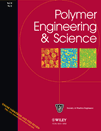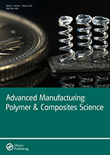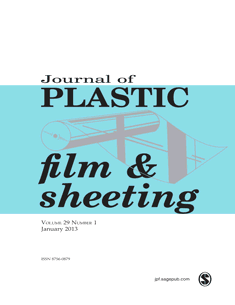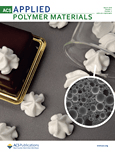
JOURNAL OF VINYL & ADDITIVE TECHNOLOGY
Scope & Guideline
Elevating Standards in Vinyl and Additive Research
Introduction
Aims and Scopes
- Polymer Composites Development:
Research articles often explore the formulation and optimization of polymer composites, specifically focusing on the incorporation of various fillers, reinforcements, and additives to improve mechanical, thermal, and flame-retardant properties. - Additives and Modifiers:
The journal emphasizes the role of different additives, such as plasticizers, flame retardants, and stabilizers, in modifying the properties of polymers, particularly polyvinyl chloride (PVC) and other vinyl-based materials. - Sustainability and Biobased Materials:
There is a notable focus on sustainable practices, including the use of biobased additives and fillers derived from natural sources, to enhance the environmental profile of polymer materials. - Characterization Techniques:
Papers frequently utilize advanced characterization techniques to analyze the physical, mechanical, and thermal properties of polymer composites, providing insights into their performance and potential applications. - Innovative Applications:
Research often highlights innovative applications of vinyl and polymer composites in various fields, including packaging, construction, automotive, and biomedical sectors, showcasing the versatility of these materials.
Trending and Emerging
- Biobased and Eco-Friendly Additives:
There is an increasing trend towards the development of biobased and eco-friendly additives that enhance the properties of polymer materials while minimizing environmental impact, reflecting a shift towards sustainability. - Advanced Characterization Techniques:
Emerging methodologies, such as molecular dynamics simulations and advanced rheological analysis, are being utilized to provide deeper insights into polymer behaviors, leading to more informed material design. - Multifunctional Polymer Composites:
Research is increasingly focused on creating multifunctional composites that combine properties such as flame retardancy, antimicrobial activity, and mechanical strength, catering to diverse applications in various industries. - Smart and Responsive Materials:
There is a growing interest in smart materials that respond to environmental stimuli, such as temperature or pH changes, indicating a shift towards materials that offer enhanced functionality and adaptability. - Nanocomposites and Hybrid Systems:
The integration of nanomaterials and hybrid systems into polymer composites is on the rise, as these innovations improve performance characteristics and open new avenues for application, particularly in high-tech industries.
Declining or Waning
- Traditional Flame Retardants:
There is a noticeable reduction in studies focusing solely on traditional flame retardants, as the field moves towards more innovative and eco-friendly alternatives that enhance flame retardancy without compromising material performance. - Conventional Plasticizers:
Research on conventional plasticizers, particularly those derived from petrochemical sources, is becoming less frequent, likely due to increasing regulatory pressures and a shift towards biobased and environmentally friendly plasticizing solutions. - Single-Component Systems:
The focus on single-component polymer systems is dwindling as researchers increasingly explore multifunctional and hybrid systems that combine various materials and additives to achieve superior performance. - Basic Mechanical Properties Analysis:
There seems to be a decrease in studies that only analyze basic mechanical properties of polymers without considering their thermal, electrical, or environmental interactions, as comprehensive evaluations are becoming the norm. - Non-Environmentally Friendly Practices:
With the growing emphasis on sustainability, there is a decline in research supporting non-environmentally friendly practices, leading to a reduction in papers that do not align with green chemistry principles.
Similar Journals

POLYMER ENGINEERING AND SCIENCE
Unveiling Innovations in Polymer EngineeringPOLYMER ENGINEERING AND SCIENCE, published by WILEY, is a premier journal specializing in the field of polymer science and engineering. Since its inception in 1961, this journal has been at the forefront of disseminating high-quality research, focusing on various aspects of polymers and plastics, including their chemistry, properties, and applications. With an impressive impact factor, it ranks in the second quartile (Q2) across multiple categories, including Chemistry (Miscellaneous), Materials Chemistry, and Polymers and Plastics, showcasing the journal's significance and influence in these vital areas of research. Researchers and professionals in academia and industry will find the latest advancements and innovative methodologies in polymer science, making this journal an essential resource for those looking to stay updated on cutting-edge developments. While it does not currently support Open Access, its comprehensive scope and critical insights positioned it as a valuable platform for advancing knowledge and fostering collaboration within the polymer community. The journal’s office is located at 111 River St, Hoboken 07030-5774, NJ, United States, emphasizing its strong presence in the academic landscape.

JOURNAL OF POLYMER ENGINEERING
Innovating Solutions Through Polymer Engineering.JOURNAL OF POLYMER ENGINEERING, published by Walter de Gruyter GmbH, stands as a pivotal platform in the field of polymer science and engineering. With an ISSN of 0334-6447 and an E-ISSN of 2191-0340, this journal has been a vital contributor to the academic landscape since its inception, spanning publications from 1981 to 2024. As a recognized entity in the realms of Chemical Engineering, Materials Chemistry, and Polymers and Plastics, it holds a respectable position in Q3 quartile rankings according to the latest assessments. The journal is positioned to promote the exchange of cutting-edge research findings, technological advancements, and critical reviews that address the complexities of polymer application and innovation. Researchers and professionals will find a wealth of information, from experimental methodologies to theoretical analyses, all designed to inspire and elevate the current understanding of polymer engineering. By fostering collaboration and dissemination of knowledge, the JOURNAL OF POLYMER ENGINEERING remains crucial for advancing research and education in its specialized domains.

Advanced Manufacturing-Polymer & Composites Science
Exploring the Future of Advanced ManufacturingAdvanced Manufacturing-Polymer & Composites Science, published by Taylor & Francis Ltd, is a prominent open-access journal dedicated to the cutting-edge fields of polymer and composite materials in advanced manufacturing. With an ISSN of 2055-0340 and an E-ISSN of 2055-0359, this journal has been providing researchers, professionals, and students critical insights since its inception in 2015. The journal is characterized by its pivotal role in disseminating high-quality research that intersects with crucial areas such as Electrical and Electronic Engineering, Management of Technology and Innovation, and Polymers and Plastics, as indicated by its Q3 and Q2 rankings across these categories in 2023. In addition, it has established a significant presence in Scopus rankings, reflecting its contribution to the academic community with specific ranks in the top half of its fields. Recognizing the importance of open access, the journal fosters wider dissemination of knowledge, allowing global access to groundbreaking studies that influence both research and practical applications. Operating from the United Kingdom, Advanced Manufacturing-Polymer & Composites Science continues to pave the way for innovation and collaboration in the field, making it an essential resource for anyone involved in materials science and engineering.

E-POLYMERS
Unlocking Knowledge in Polymers and Theoretical ChemistryE-Polymers, an esteemed journal published by De Gruyter Poland Sp. z o.o., serves as a vital platform for advancing knowledge in the fields of chemical engineering, polymer science, and theoretical chemistry. With its Open Access policy since 2019, researchers from around the globe can freely access and disseminate groundbreaking findings that span the convergence of diverse disciplines, making it an indispensable resource for both academia and industry. The journal is recognized for its significant impact, reflected in its Q2 ranking in Chemical Engineering, Physical and Theoretical Chemistry, and Polymers and Plastics categories in 2023. Its impressive Scopus rankings further solidify its position, showcasing a percentile rank of 70th and above across major categories. With a publication history extending from 2001 to 2024, E-Polymers continually addresses pressing challenges within the polymer research community, fostering innovation and collaboration among researchers, professionals, and students eager to contribute to the evolving landscape of materials science.

JOURNAL OF PLASTIC FILM & SHEETING
Empowering Researchers in Film and Sheeting AdvancementsJournal of Plastic Film & Sheeting, published by SAGE Publications Ltd, is a key periodical in the realms of materials science and polymer research. With its ISSN 8756-0879 and E-ISSN 1530-8014, this journal provides a platform for substantial advancements in the understanding and application of plastic films and sheeting technology. As of 2023, it has achieved a commendable impact factor and is ranked in the Q2 quartile across multiple categories including Materials Chemistry, Polymers and Plastics, and Surfaces, Coatings and Films. The journal's focus extends from fundamental research to practical developments, making it indispensable for researchers, professionals, and students engaged in these dynamic fields. With comprehensive coverage from 1985 to 2024, it remains an essential resource for those seeking to advance their knowledge and applications in plastic technology.

INTERNATIONAL POLYMER PROCESSING
Advancing Polymer Knowledge for a Sustainable FutureINTERNATIONAL POLYMER PROCESSING, published by WALTER DE GRUYTER GMBH, serves as a crucial platform for professionals and researchers in the fields of Chemical Engineering, Industrial and Manufacturing Engineering, and Materials Science, particularly focusing on polymers and plastics. With its ISSN 0930-777X and E-ISSN 2195-8602, this journal has been in circulation since 1988 and continues to expand its contributions to contemporary research trends through to 2024. Ranking in the third quartile across multiple categories, including Chemical Engineering (miscellaneous) and Materials Chemistry, it offers insightful and rigorous peer-reviewed articles that enhance the understanding of polymer processing technologies and innovations. This journal is vital for anyone engaged in polymer science and engineering, providing both theoretical and practical perspectives that advance the field. Although it does not provide open access, the journal's content is indispensable for academia and industry professionals looking to stay at the forefront of polymer research.

ACS Applied Polymer Materials
Innovating Materials, Transforming ApplicationsACS Applied Polymer Materials is a prestigious journal published by the American Chemical Society, specifically tailored for the dynamic fields of Organic Chemistry, Polymers and Plastics, and Process Chemistry and Technology. With its ISSN 2637-6105, the journal has rapidly established itself within the academic community, achieving a distinguished Q1 quartile ranking across multiple categories in 2023. This places it among the top-tier journals globally, reinforcing its critical role in disseminating groundbreaking research and innovation in polymer science. The journal is known for its rigorous peer-review process and publishes high-quality articles that are pivotal for researchers, professionals, and students eager to advance knowledge in polymer materials and their applications. Positioned to cover converging themes from 2019 through 2024, ACS Applied Polymer Materials embraces a wide scope of studies, from fundamental chemistry to practical engineering applications, thereby fostering significant advancements in material science. While it offers traditional access options, the journal's impact is reflected in its impressive rankings within Scopus, indicating its relevance and influence in the chemical engineering domain. Join the global community of innovators and discover the latest insights that continue to shape the landscape of applied polymer research.

Express Polymer Letters
Advancing Polymer Science for a Sustainable FutureExpress Polymer Letters is a leading open-access journal published by BUDAPEST UNIVERSITY OF TECHNOLOGY AND ECONOMICS, focusing on the fast-paced realm of polymer science and engineering. With a broad scope that encompasses the interdisciplinary fields of Chemical Engineering, Materials Chemistry, and Organic Chemistry, the journal serves as a crucial platform for researchers and professionals dedicated to advancing knowledge and innovation in polymer-related disciplines. Since its inception in 2007, it has consistently provided high-quality, peer-reviewed research and has achieved a respectable impact within various categories, evidenced by its Q2 quartile rankings across multiple Scopus categories and its competitive standings in the field. The journal's dedication to open access ensures that research is widely disseminated, promoting transparency and collaboration within the academic community. Positioned to converge into the future, Express Polymer Letters remains an essential resource for cutting-edge studies and developments, with an anticipated convergence period extending through 2024.

Journal of Polymer & Composites
Elevating Knowledge in Polymer and Composite Applications Worldwide.Journal of Polymer & Composites, with ISSN 2321-8525 and E-ISSN 2321-2810, is an esteemed academic journal published by STM JOURNALS, dedicated to the advancement of knowledge in the rapidly evolving fields of polymer science and composite materials. The journal serves as a pivotal platform for researchers and professionals, offering cutting-edge research articles, reviews, and case studies that explore innovative developments and applications in polymer chemistry, material science, and engineering. Although currently lacking an impact factor citation, the journal aims to foster dialogue among academia and industry partners, addressing the latest trends and breakthroughs that drive the field forward. With a commitment to scholarly excellence, the Journal of Polymer & Composites is positioned as an essential resource for enhancing the understanding of polymer composites and their multifaceted applications. Notably, STM JOURNALS' reputation for quality publications underscores the journal’s importance in facilitating impactful research and educational initiatives worldwide.

POLYMER SCIENCE SERIES B
Elevating Knowledge in Polymer SciencePOLYMER SCIENCE SERIES B is a distinguished journal published by MAIK NAUKA/INTERPERIODICA/SPRINGER, dedicated to advancing knowledge in the fields of ceramics and composites, materials chemistry, and polymers and plastics. The journal, identifiable by its ISSN 1560-0904 and E-ISSN 1555-6123, spans a significant timeline from 1996 to 2024, reflecting its commitment to preserving and disseminating cutting-edge research in polymer science. With its current ranking in the Q3 category across relevant fields, it supports scholars and professionals in enhancing their understanding and application of polymeric materials. While it operates on a non-open access basis, the journal is pivotal for researchers seeking in-depth analysis and peer-reviewed studies. Located in the heart of the United States at 233 Spring St, New York, NY 10013-1578, POLYMER SCIENCE SERIES B serves as an essential resource for committed researchers, professionals, and students aiming to push the boundaries of polymer science.